| Firebombing of New Orleans gay bar killed 32 on June 24, 1973
Last week, California gave its stamp of approval to same-sex marriage, becoming only the second state after Massachusetts to do so. Gay couples in California lined up to tie the knot, welcomed with open arms by most city halls. Many Americans rejoiced, both gay and straight. Especially happy was the California wedding industry, which stands to gain an estimated additional $684 million over the next three years.
Fear of gay marriage has long been exploited by right-wingers as the ultimate homophobic weapon to scare up bigotry and votes. Predictably, a parade of anti-gay forces came out of the woodwork, howling in protest.
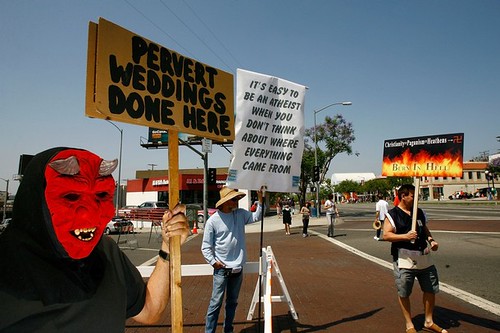
Some rural counties stopped issuing any marriage licenses to avoid implementing the California Supreme Court’s ruling. Opponents have placed an initiative on the fall ballot that would once again shut the door on same-sex marriage.
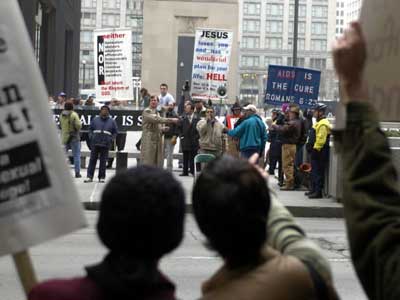
But they’re on the wrong side of history. And to fully understand the events of last week, it’s important to remember a tragedy that happened thirty-five years ago today, and how much things have changed for gays and lesbians since then.
On the last Sunday in June, 1973, a gay bar in New Orleans called the UpStairs Lounge was firebombed, and the resulting blaze killed 32 people. At the time, the bar had recently served as the temporary home for the fledgling New Orleans congregation of the Metropolitan Community Church. Founded in Los Angeles in 1968, the MCC was the nation’s first gay church.
It was the third fire at a MCC church during the first half of 1973, following earlier arsons in Nashville and Los Angeles. The church’s Los Angeles headquarters was destroyed on January 27, five days after the U.S. Supreme Court announced its momentous decision in the case of Roe v. Wade.
That Sunday was the final day of Pride Weekend, the fourth anniversary of the Stonewall Uprising of 1969. Yet there was still no Gay Pride Parade in New Orleans. Almost two dozen gay bars dotted the French Quarter, but gay life in the city remained largely underground.
Located on the second floor of a three-story building at the corner of Chartres and Iberville Streets, the UpStairs Lounge had only one entrance, up a wooden flight of stairs. Nearly 125 regulars had jammed the bar earlier that afternoon for a free beer and all you could eat special. After the free beer ran out, about 60 stayed, mostly members of the MCC congregation.
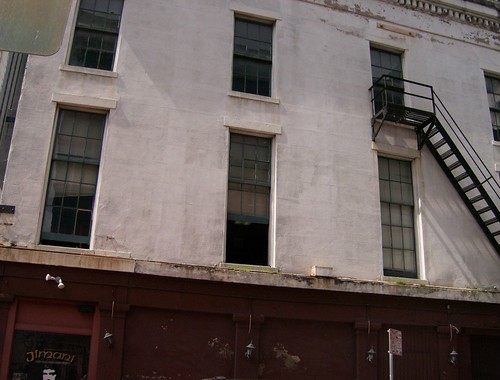
Original site of the UpStairs Lounge at 141 Chartres Street as it looked in Spring, 2008.
Before moving worship services to their pastor’s home earlier in June, congregation members had been holding services at the UpStairs on Sundays. But the bar was still a spiritual gathering place. There was a piano in one of the bar’s three rooms, and a cabaret stage. Members would pray and sing in this room, and every Sunday night, they gathered around the piano for a song they had adopted as their anthem, United We Stand, by The Brotherhood of Man.
United we stand, divided we fall...
And if our backs should ever be against the wall,
We’ll be together…
Together...you and I.
They sang the song that evening, with David Gary on the piano, a professional pianist who played regularly in the lounge of the Marriott Hotel across the street. The congregation members repeated the verses again and again, swaying back and forth, arm in arm, happy to be together at their former place of worship on Pride Sunday, still feeling the effects of the free beer special.
At 7:56 pm a buzzer from downstairs sounded, the one that signaled a cab had arrived. No one had called a cab, but when someone opened the second floor steel door to the stairwell, flames rushed in. An arsonist had deliberately set the wooden stairs ablaze, and the oxygen starved fire exploded. The still-crowded bar became an inferno within seconds.
The emergency exit was not marked, and the windows were boarded up or covered with iron bars. A few survivors managed to make it through, and jumped to the sidewalks, some in flames. Rev. Bill Larson, the local MCC pastor, got stuck halfway and burned to death wedged in a window, his corpse visible throughout the next day to witnesses below.

This photo appeared in wire stories about the tragedy. Rev. Larson's body was not removed from the window throughout the initial investigation, and symbolized the city's uncaring attitude towards the mostly gay victims.
Bartender Buddy Rasmussen led a group of fifteen to safety through the unmarked back door. One of them was MCC assistant pastor George "Mitch" Mitchell. Then Mitch ran back into the burning building trying to save his partner, Louis Broussard. Their bodies were discovered lying together.

View of the building from Iberville Street in the fire's aftermath. Police are visible in the far right window.
29 lives were lost that night, and another three victims later died of injuries from the fire. The death toll was the worst in New Orleans history up to that time, including when the French Quarter burned to the ground in 1788. It was almost assuredly the largest mass murder of gays and lesbians to ever occur in the United States.
Yet the city of New Orleans tried mightily to ignore it. Public reaction was grossly out of proportion to what would have happened if the victims were straight. The fire exposed an ugly streak of homophobia and bigotry. It was the first time New Orleans had to openly confront the existence of its own gay community, and the results were not pretty.
Initial news coverage omitted mention that the fire had anything to do with gays, despite the fact that a gay church in a gay bar had been torched. What stories did appear used dehumanizing language to paint the scene, with stories in the States-Item, New Orleans’ afternoon paper, describing “bodies stacked up like pancakes,” and that “in one corner, workers stood knee deep in bodies…the heat had been so intense, many were cooked together.” Other reports spoke of “mass charred flesh” and victims who were “literally cooked.”

The press ran quotes from one New Orleans cab driver who said, “I hope the fire burned their dress off,” and a local woman who claimed “the Lord had something to do with this.” The fire disappeared from headlines after the second day.
A joke made the rounds and was repeated by talk radio hosts asking, “What will they bury the ashes of queers in? Fruit jars.” Official statements by police were similarly offensive. Major Henry Morris, chief detective of the New Orleans Police Department, dismissed the importance of the investigation in an interview with the States-Item. Asked about identifying the victims, he said, “We don’t even know these papers belonged to the people we found them on. Some thieves hung out there, and you know this was a queer bar.”
In the days that followed, other churches refused to allow survivors to hold a memorial service for the victims on their premises. Catholics, Lutherans, and Baptists all said no.
William “Father Bill” Richardson, the closeted rector of St. George’s Episcopal Church, agreed to allow a small prayer service to be held on Monday evening. It was advertised only by word of mouth and drew about 80 mourners. The next day, Richardson was rebuked by Iveson Noland, the Episcopalian bishop of New Orleans, who forbade him to let the church be used again. Bishop Nolan said he had received over 100 angry phone calls from local parishioners, and Richardson’s mailbox would later fill with hate letters.
Eventually, two additional ministers offered their sanctuaries – a Unitarian church, and St. Mark’s United Methodist Church in the French Quarter. It was here that a July 1 memorial service was held attended by 250 people, including the state's Methodist bishop, Finis Crutchfield, who would die of AIDS fourteen years later at age 70.
Although called on to do so, no elected officials in all of Louisiana issued statements of sympathy or mourning. Even more stunning, some families refused to claim the bodies of their dead sons, too ashamed to admit they might be gay. The city would not release the remains of four unidentified persons for burial by the surviving MCC congregation members. They were dumped in mass graves at Potter’s Field, New Orleans' pauper cemetery. No one was ever charged with the crime, and it remains unsolved.
Thirty-five years from now, let’s hope we look back and wonder what the fuss over gay marriage was all about. But history won’t remember anti-gay bigots kindly, whether they were cowardly murderers like the unknown arsonist who firebombed the UpStairs Lounge in 1973, the people of New Orleans who callously disregarded a fire that took 32 of their fellow citizens' lives because it happened at a gay bar, or today’s misguided opponents of same-sex marriage.
Much of the research for this post came from Out for Good: The Struggle to Build a Gay Civil Rights Movement in America (1999), by Dudley Clendinen and Adam Nagourney, and James Thomas Sears' book Rebels, Rubyfruit, and Rhinestones: Queering Space in the Stonewall South (2001). Thanks also to Nashville writer Cole Wakefield for making news footage of the fire available on YouTube.
Special thanks to New Orleans community historian Robert Rickey, author of a recent University of New Orleans paper on the UpStairs Lounge tragedy, "Fear and Loathing in the City that Forgot to Care," for taking most of the photos included here.
In Memory (List of victims from The UpStairs Fire: 25th Memorial Service)
Partners Joe William Bailey & Clarence Josephy McCloskey, Jr. perished together. McCloskey's sisters and two nieces attended the Memorial Service. His niece, Susan, represented McCloskey in the Jazz Funeral.
Duane George "Mitch" Mitchell, assistant MCC pastor. He had escaped through the emergency exit with a group led by bartender Douglas "Buddy" Rasmussen, but ran back into the burning building trying to save his partner, Louis Horace Broussard. Their bodies were discovered lying together.
Mrs. Willie Inez Warren of Pensacola later died from burns suffered in the fire. Her two sons died inside the bar, Eddie Hosea Warren and James Curtis Warren.
Pastor of the MCC, Rev. William R. Larson, formerly a Methodist lay minister.
Dr. Perry Lane Waters, Jr., a Jefferson Parish dentist. Several victims were his patients and were identified by his x-rays.
Douglas Maxwell Williams
Leon Richard Maples, a visitor from Florida.
George Steven Matyi
Larry Stratton
Reginald Adams, Jr., MCC member, formerly a Jesuit Scholastic. Partner of entertainer Regina Adams.
James Walls Hambrick, who had jumped from the building in flames, died later that week.
Horace "Skip" Getchell, MCC member.
Joseph Henry Adams
Herbert Dean Cooley, UpStairs Lounge bartender and MCC member.
Professional pianist, David Stuart Gary.
Guy D. Anderson
Luther Boggs, teacher, who died two weeks later. Notified while hospitalized with terrible burns that he had been fired from his job.
Donald Walter Dunbar
Professional linguist, Adam Roland Fontenot, survived by his partner, bartender Douglas "Buddy" Rasmussen, who led a group to safety.
John Thomas Golding, Sr., member of MCC Pastor's Advisory Group.
Gerald Hoyt Gordon
Kenneth Paul Harrington, Federal Government employee.
Glenn Richard "Dick" Green, Navy veteran.
Robert "Bob" Lumpkin
Four men were buried in Potter's Field: Ferris LeBlanc (later indentified), and three persons only identified as Unknown White Males. The city refused to release these bodies to the MCC for burial.
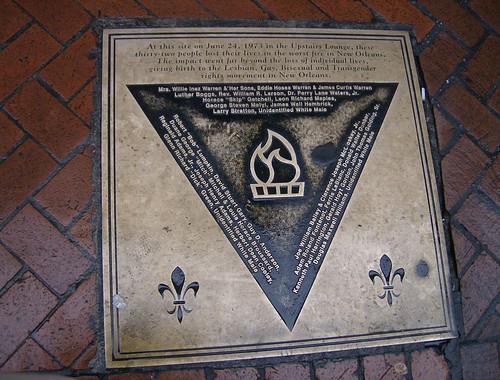
A sidewalk memorial plaque now rests outside the building, dedicated on the fire's 30th anniversary in 2003.
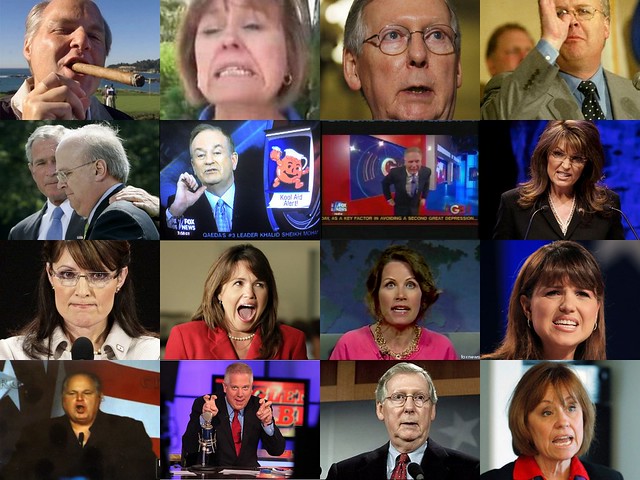
4 comments:
I don't know if the Ferris LeBlanc in the upstairs fire in New Orleans was my uncle or not. I do know he was a WWII veteran surviving the Battle of the Bulge. Being gay he didn't survive, whether in this fire or not. When his family was enlightened, he couldn't face them and never knew we would have accepted him. So, rest in peace, dear uncle, we loved you.
I was a young bride living in New Orleans when this happened. This horible photo splashed across the front page of both The Times-Picayune and The States-Item shook me to my core. I still remember how sick I felt, that there was someone in my beloved city who could commit this crime...and that the city officials were so coldly indifferent to the suffering of everyone affected by the fire. May everyone who lost thier lives there rest in peace.
i am starting a facebook page about the fire, for family members and others who care.search the upstairs longe n.o. part 2.
?Tara
Ferris LeBlanc was my uncle and yes 'anonymous' that is him. He disappeared from our family not because he was gay, but because his partner had ripped off family members and Ferris disappeared due to shame and guilt. If we had known where he was or what happened to him we would have brought his body home. Some of us are going to New Orleans now that we know what happened, to try and find answers and do something about his burial situation. We also want to tell his story, so he is not remembered as the only identified victim left alone.
Skip
Post a Comment